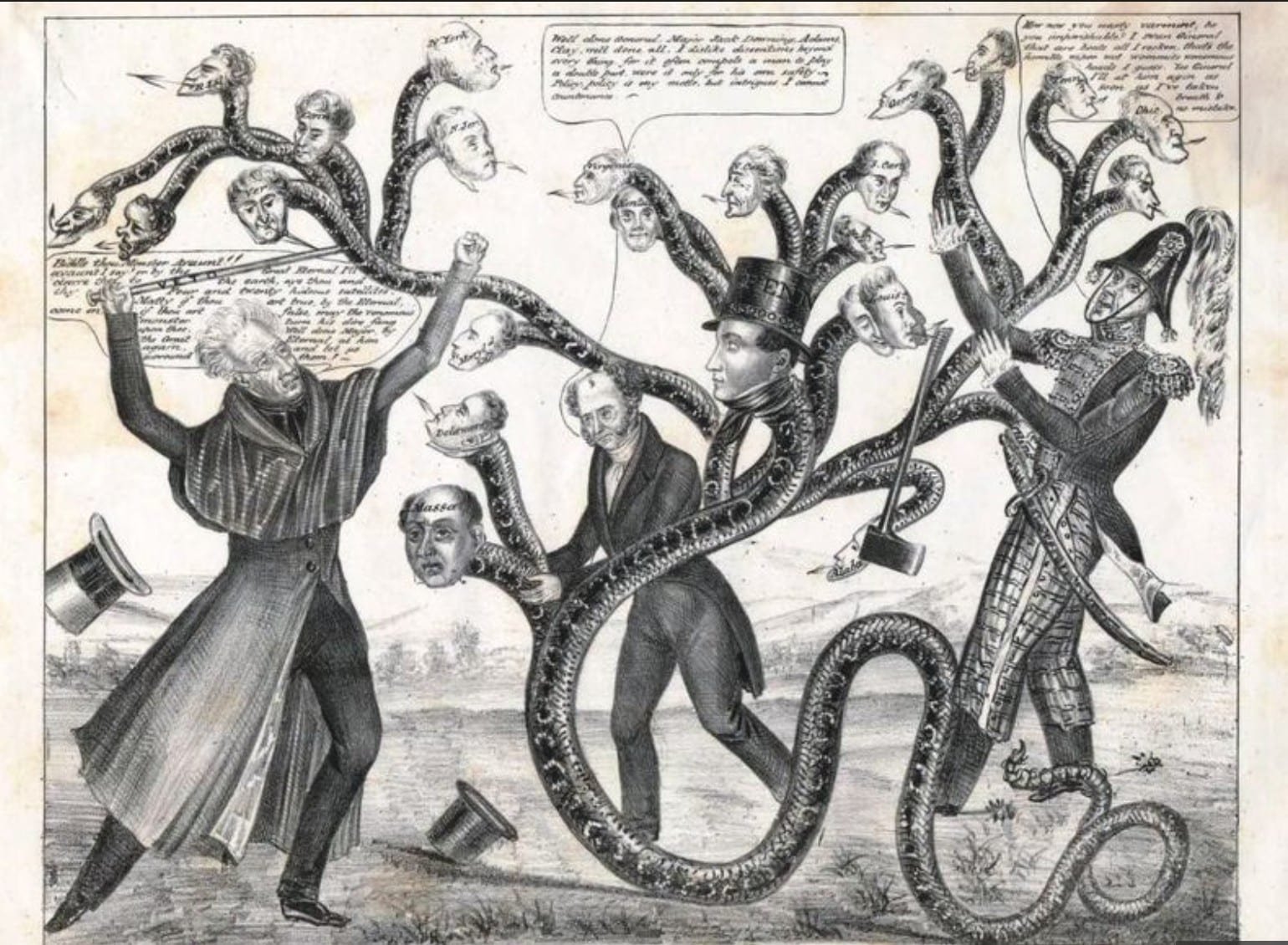
Conspiracy Theories Abounded in 19th-Century American Politics
Rumors of secret alliances, bank deals, and double-crossings were rampant in early American elections
By Mark R. Cheathem, Zocalo Public Square
Smithsonian.com
From claims that NASA faked the moon landing to suspicions about the U.S. government’s complicity in the assassination of John F. Kennedy, Americans love conspiracy theories. Conspiratorial rhetoric in presidential campaigns and its distracting impact on the body politic have been a fixture in American elections from the beginning, but conspiracies flourished in the 1820s and 1830s, when modern-day American political parties developed, and the expansion of white male suffrage increased the nation’s voting base. These new parties, which included the Democrats, the National Republicans, the Anti-Masons, and the Whigs, frequently used conspiracy accusations as a political tool to capture new voters—ultimately bringing about a recession and a collapse of public trust in the democratic process.
During the early decades of the American republic, the Federalist and Jeffersonian Republican Parties engaged in conspiratorial rhetoric on a regular basis. Following the War of 1812, the Federalist Party faded from the political landscape, leaving the Republicans as the predominant national party. Their hold was so great that in 1816 and 1820, James Monroe, the Republican presidential candidate, ran virtually unopposed, but in 1824, the Republicans splintered into multiple and disparate factions. Five viable candidates ran in that election cycle, and John Quincy Adams won the presidency.
If this article interests you, read more at Smithsonian.com
Mark R. Cheathem is professor of history and project director of the Papers of Martin Van Buren at Cumberland University. He is the author of The Coming of Democracy: Presidential Campaigning in the Age of Jackson.
This essay is part of What It Means to Be American, a project of the Smithsonian’s National Museum of American History and Arizona State University, produced by Zócalo Public Square.

Carol graduated from Riverside White Cross School of Nursing in Columbus, Ohio and received her diploma as a registered nurse. She attended Bowling Green State University where she received a Bachelor of Arts Degree in History and Literature. She attended the University of Toledo, College of Nursing, and received a Master’s of Nursing Science Degree as an Educator.
She has traveled extensively, is a photographer, and writes on medical issues. Carol has three children RJ, Katherine, and Stephen – one daughter-in-law; Katie – two granddaughters; Isabella Marianna and Zoe Olivia – and one grandson, Alexander Paul. She also shares her life with her husband Gordon Duff, many cats, and two rescues.
ATTENTION READERS
We See The World From All Sides and Want YOU To Be Fully InformedIn fact, intentional disinformation is a disgraceful scourge in media today. So to assuage any possible errant incorrect information posted herein, we strongly encourage you to seek corroboration from other non-VT sources before forming an educated opinion.
About VT - Policies & Disclosures - Comment Policy




19th century Americans couldn’t have had conspiracy theories. The CIA was not blackmailing Washington yet and the term had not been created to intimidate school teachers. The conspiracies were real and in your face.
Comments are closed.